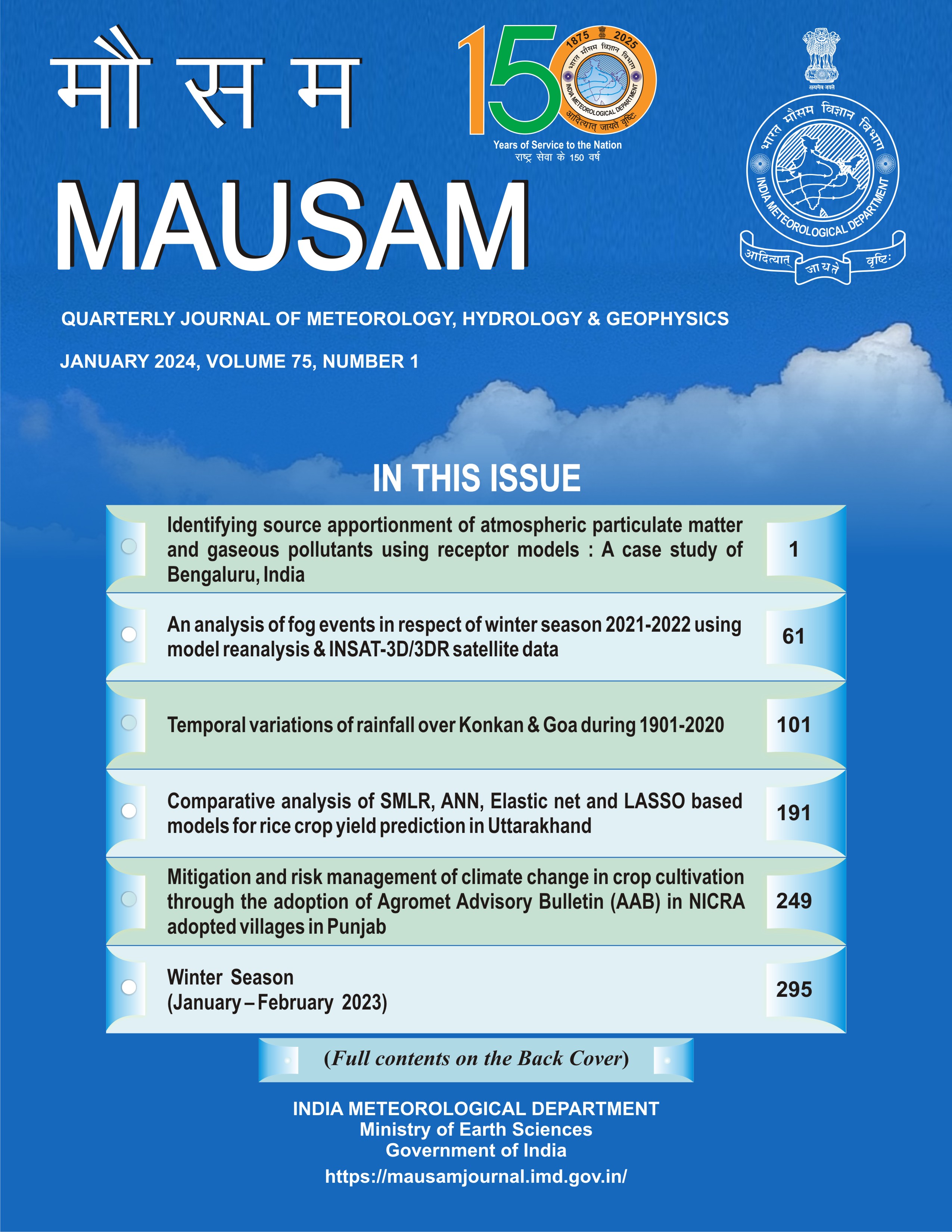Extreme value analysis of precipitation and temperature over Jammu & Kashmir and Ladakh in western Himalaya, India
DOI:
https://doi.org/10.54302/mausam.v75i1.6133Abstract
Climate change has become a major issue for the world today. Small changes in the climate in the Himalayan region can have a significant impact on the delicate ecosystem, which is very sensitive to such changes. Recent investigations into climate change in the Western Himalayas have provided compelling evidence that these regions are especially susceptible to a wide variety of catastrophic occurrences. In the current scenario, the threat posed by climate change to human existence in Jammu and Kashmir (J&K), as well as the region of Ladakh, has grown more tangible and evident. Temperature and precipitation statistics could be used to observe this regional climatic shift. This study analyses and forecasts long-term spatio-temporal variations in precipitation and temperature using a century-long dataset from 1901 to 2002 over 14 districts of Jammu and Kashmir and Ladakh. The Augmented Dickey-Fuller (ADF) test and the Kwiatkowski-Phillips-Schmidt-Shin (KPSS) test of stationarity on the data show that the time series is stationary. Extreme Value Theory (EVT), which is an outstanding statistical method to interpret the records for the estimation of the future probability of the occurrence of extremes, is utilised in this study. Further, precipitation and temperature extremes are forecasted for 50, 80, 100, 120, 200, 250, 300, and 500 year return periods respectively and results reveal that the districts- Jammu, Rajouri, Leh, Srinagar, Baramulla and Poonch will be more prone to extreme weather events phenomenon.
Downloads
Published
How to Cite
Issue
Section
License
Copyright (c) 2023 MAUSAM

This work is licensed under a Creative Commons Attribution-NonCommercial 4.0 International License.
All articles published by MAUSAM are licensed under the Creative Commons Attribution 4.0 International License. This permits anyone.
Anyone is free:
- To Share - to copy, distribute and transmit the work
- To Remix - to adapt the work.
Under the following conditions:
- Share - copy and redistribute the material in any medium or format
- Adapt - remix, transform, and build upon the material for any purpose, even
commercially.



